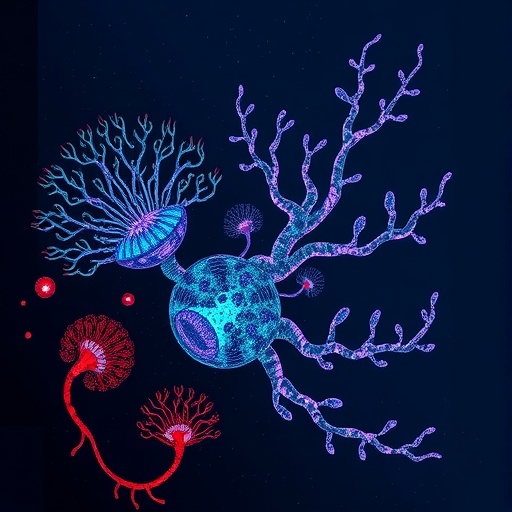In the summer of 2024, an ambitious deep-sea expedition embarked on a groundbreaking journey to explore the enigmatic ecosystems inhabiting the deepest oceanic trenches. Conducted aboard the research vessel Tan Suo Yi Hao, the TS42 cruise deployed the state-of-the-art human-occupied vehicle Fendouzhe, equipped with hydraulically powered manipulators mounted on dual swing arms. This sophisticated apparatus allowed precise and efficient collection of biological and geological samples from depths previously inaccessible to direct investigation. Guided by expert operators within the submersible, the team secured a diverse array of fauna and sedimentary materials, storing them meticulously in specialized compartments to preserve their integrity for subsequent analyses.
.adsslot_Gg7uxkT6JF{ width:728px !important; height:90px !important; }
@media (max-width:1199px) { .adsslot_Gg7uxkT6JF{ width:468px !important; height:60px !important; } }
@media (max-width:767px) { .adsslot_Gg7uxkT6JF{ width:320px !important; height:50px !important; } }
ADVERTISEMENT
Concurrently, geochemical investigations focused intently on sediment pushcores retrieved during each descent, with 6 to 12 cores collected per dive by the submersible’s manipulators. These sediment blocks were promptly chilled in a 4°C cold room onboard to inhibit chemical alteration prior to analysis. Subsamples exhibiting significant methane concentrations underwent exhaustive isotopic scrutiny, underpinning studies of carbon and hydrogen cycling within the hadal environment. Advanced pore-water extraction techniques employed Rhizon samplers inserted at two-centimeter intervals, facilitating acquisition of uncontaminated fluids for subsequent hydrogen sulfide, sulfate, ammonium, and dissolved inorganic carbon measurements.
This comprehensive suite of investigations revealed a surprisingly vibrant ecosystem thriving under extreme pressure and darkness at the hadal trench’s abyssal bottom. The detection of flourishing chemosynthetic life forms demonstrates adaptive strategies harnessing methane and sulfide seepage to fuel complex food webs independent of sunlight. Coupling ecological observations with molecular genetics and environmental geochemistry provides an unprecedented multidimensional portrait of life at Earth’s deepest marine frontiers. These findings challenge prevailing assumptions about life’s limits, offering profound implications for biogeochemical cycling and deep-ocean biodiversity.
Moreover, the integration of metagenomic and isotopic techniques with traditional taxonomy and videography exemplifies a holistic study design, crucial for untangling complex ecological and geochemical interactions within these isolated habitats. Through robust sampling protocols and meticulous analytical procedures, the study lays a foundation for longitudinal monitoring and comparative analyses across geographic regions and depth gradients. The insights generated extend beyond pure science, informing predictions about the impacts of climate change and anthropogenic disturbances on fragile deep-sea environments.
Ultimately, this research not only enriches our understanding of hadal biodiversity and methane dynamics but also inspires broader curiosity about Earth’s least explored ecosystems. The scale and depth of the endeavor invite contemplation of the resilience and versatility of life, inviting reevaluation of ecological paradigms in the context of planet-wide environmental heterogeneity. As the scientific community continues to probe these depths, such pioneering studies will undoubtedly redefine our conception of the deep ocean as a vibrant and vital realm.
Subject of Research: Flourishing chemosynthetic life and biogeochemical processes at hadal trench depths.
Article Title: Flourishing chemosynthetic life at the greatest depths of hadal trenches.
Article References:
Peng, X., Du, M., Gebruk, A. et al. Flourishing chemosynthetic life at the greatest depths of hadal trenches. Nature (2025). https://doi.org/10.1038/s41586-025-09317-z
Image Credits: AI Generated
Tags: chemosynthetic life formsdeep-sea biological samplingdeep-sea ecosystemsdeep-sea expedition research methodshadal trenches explorationmarine biodiversity assessmentoceanic trench ecosystems analysispreservation techniques for biological samplessedimentary sample collection methodssubmersible technology in ocean researchtaxonomic categorization of marine speciesunderwater video documentation





